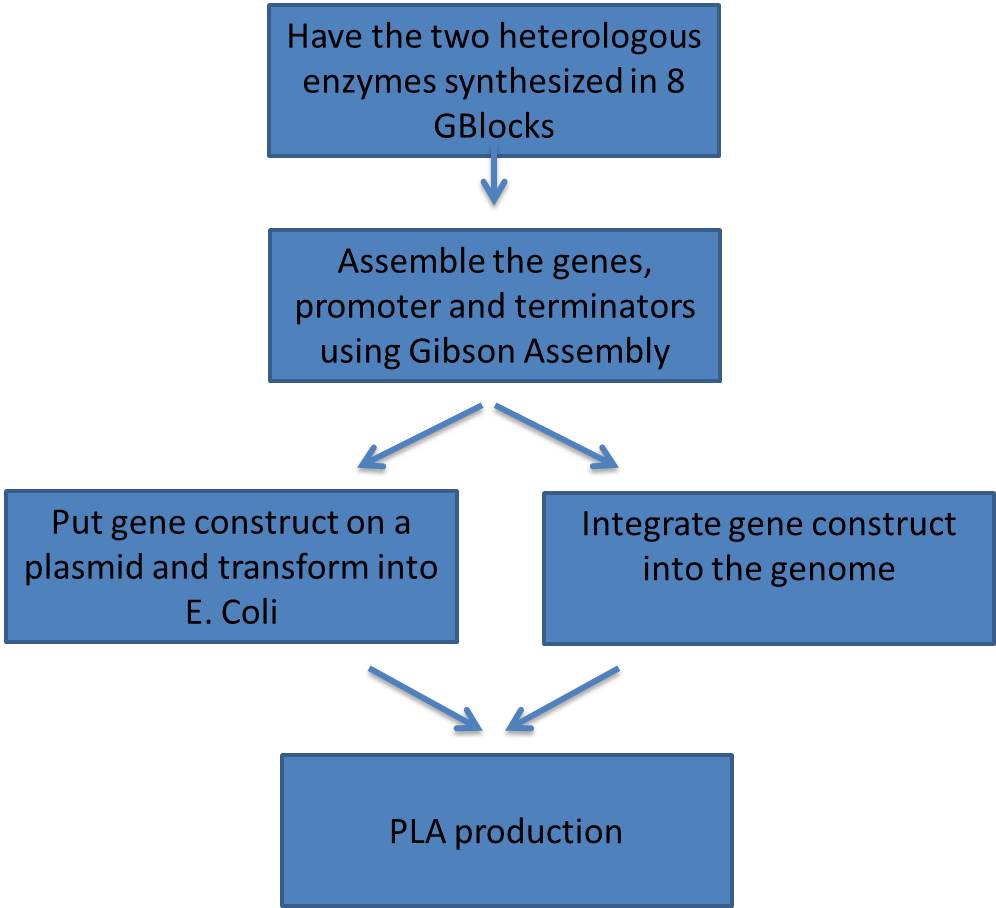Team:Yale/Project Validate
From 2013.igem.org
Contents |
Engineer strains of E. coli to validate PLA synthesis
Synthesizing and Assembling the Heterologous Enzymes
- In order to reproduce the results of the Lee group we needed to insert the two heterologous genes.
- Clostridum propionicum - propionate CoA transferase (denoted PCT)
- Pseudomonas resinovorans - polyhydroxyalkanoate synthase (denoted PHA)
Here is a schematic of what the entire construct looks like with both promoter, genes and terminators.

Each fragment was amplified using PCR to give homology to adjacent fragments. Using Gibson assembly, our plan was to assemble all 10 fragments into one construct.

To facilitate the process, we used Gibson assembly on each gene separately. Here is a gel of the first 4 Gblocks (labeled PLA1-4), along with the first terminator (labeled T1), and then the 5 pieces assembled together.
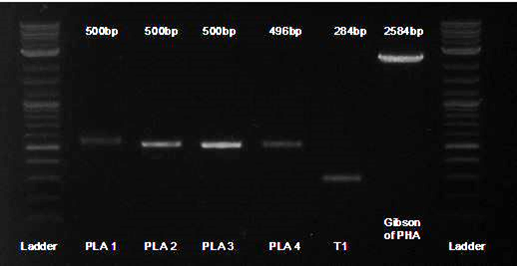

Here is a gel of the assembly of the last 4 Gblocks, along with the second terminator.


Here is a gel of the assembly of the entire construct.


Sequencing the construct
- Keck Biotechnology Resource Laboratory kindly sequenced our construct for us
- Using our Geneious license we aligned the sequencing results with the desired sequence of our construct
- Here is a zoomed-in picture of the results

These are the results of the alignment of all 8 fragments with the desired sequence. Ignoring the mismatches at the beginning and end of the sequencing fragments, along with those mismatches covered by the complementary fragment, there appears to only be one legitimate error in our construct. It is denoted below with the red arrow. Fortunately, this happens to fall in a noncoding region of the construct (after the first terminator and before the second promoter).
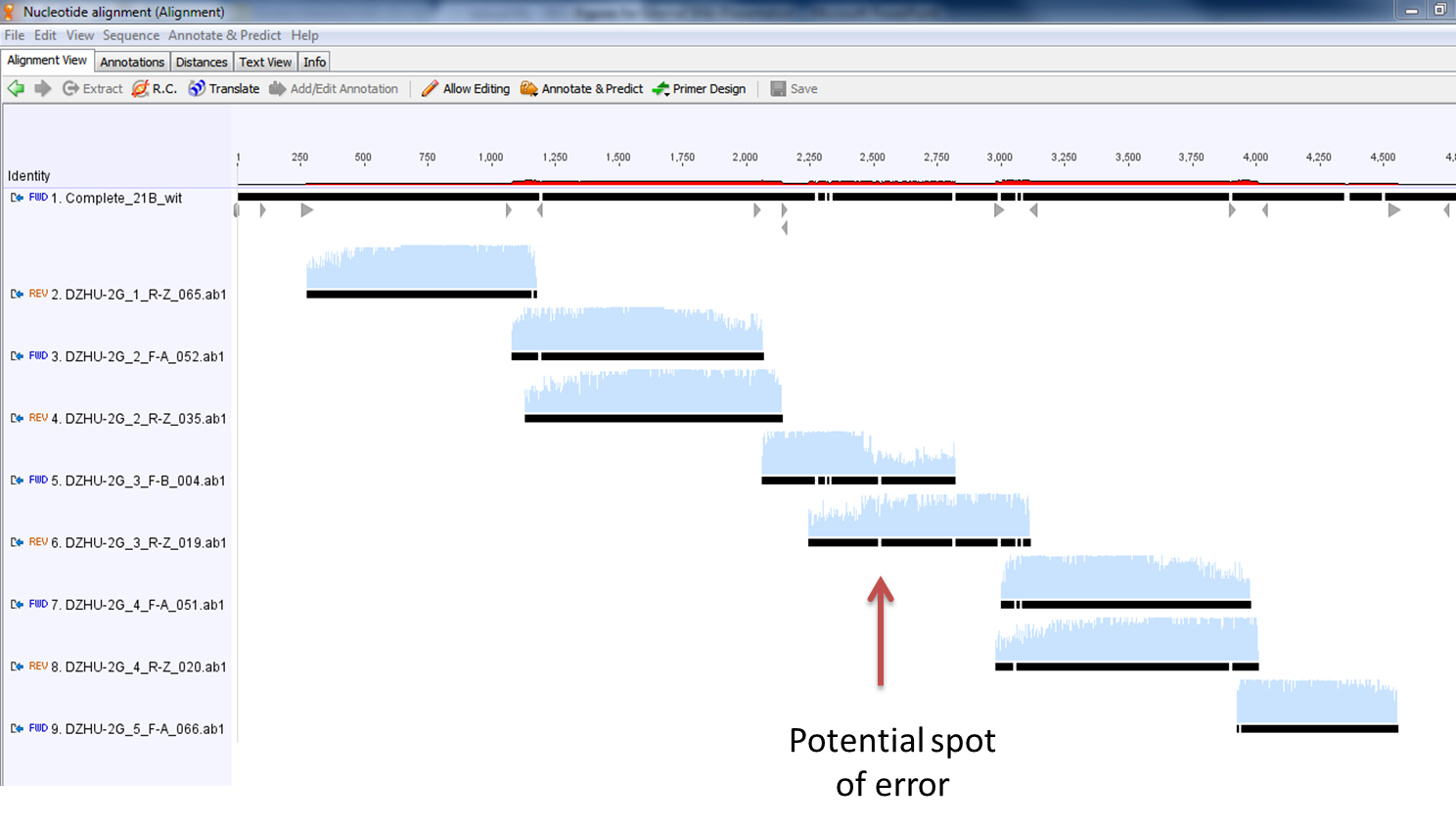
Insertion via Plasmid
- In order to insert the two heterologous genes into E. coli, we used Gibson assembly to add our construct onto a plasmid with KanR as a selectable marker.
- Here is the map of the plasmid and the results of the transformation
- This strain we used in all subsequent steps of the project
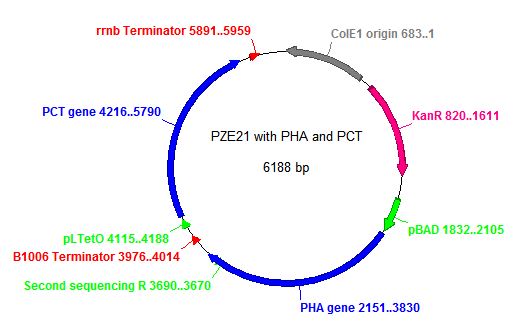
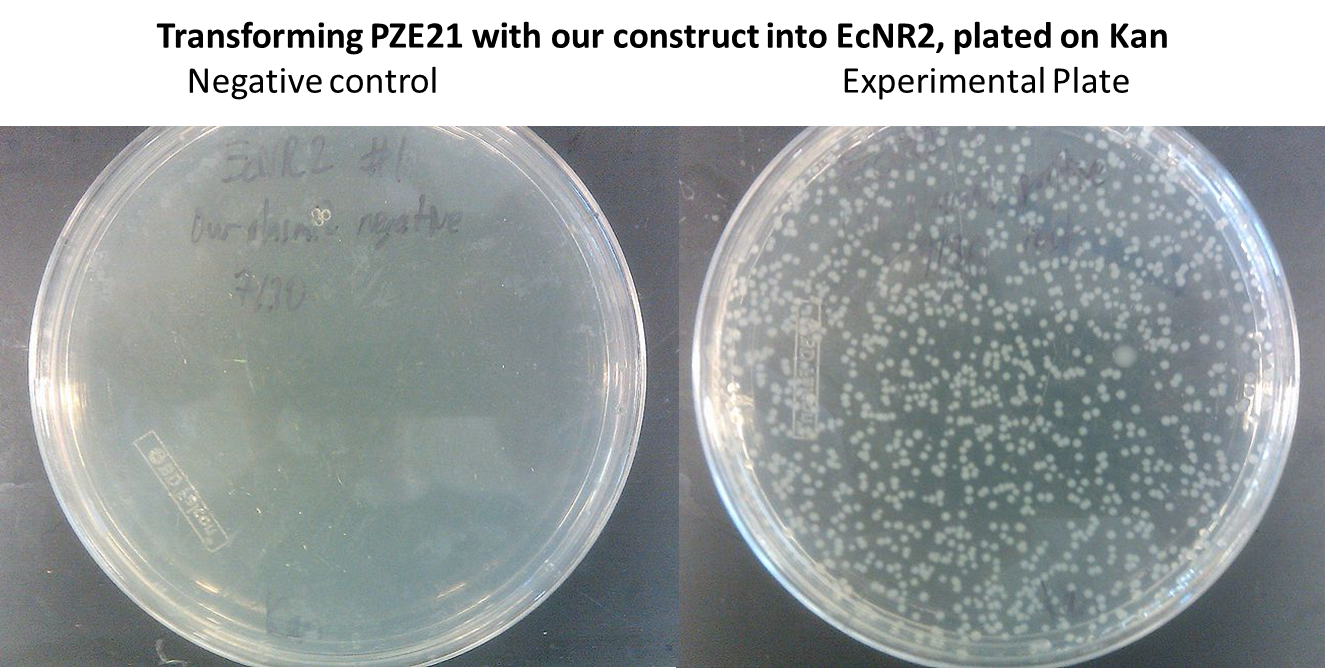
Inserting into the Genome
TolC Negative Selection
- We used a strain with TolC located at 21B, a highly recombinogenic site in the genome (Isaacs et al. 2011). Our plan was to replace TolC with our construct using double stranded DNA recombination, then use colicin E1 negative selection to pick desired cells (DeVito 2007).
- We had difficulties getting this method to work
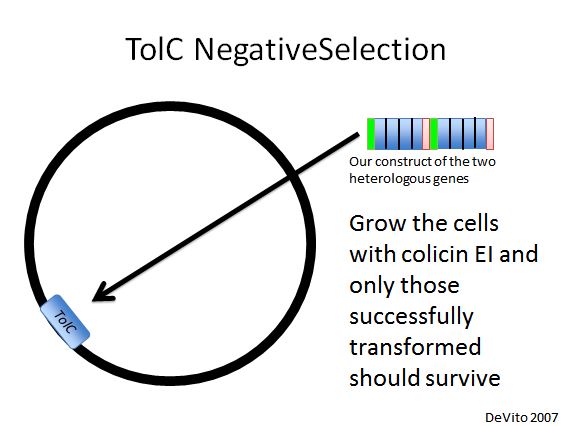
Positive Selection with KanR
- Since we had trouble with the TolC negative selection, we decided to pursue an alternative option — positive selection.
- We planned to add kanamycin resistance to the end of our construct and use double-stranded recombination to integrate it into the genome again at site 21B.
- We also had difficulties getting this method to work
- We decided to postpone this step of our experiment and use the strain with our construct on a plasmid inside E. coli


- Inserting our construct into the genome is still an ongoing process that will hopefully be completed soon
 "
"

